In case you live under a rock or just got internet access today, you may have missed all the hoopla surrounding the release of Microsoft Flight Simulator 2020. The first release in the storied franchise in fifteen years, the 2020 edition has landed with a satisfying thud that has rocked the PC gaming landscape. Featuring next-generation visuals on an almost unthinkable scale, the flight sim makes a first impression that can leave your jaw on the floor. On the flip side, someone has to pick up the bill for all the fancy business you see on your screens. In this case, it would be your PC’s hardware, which will take a beating, should you opt to fly the friendly skies with Microsoft’s new killer app.
Thankfully, it is possible to get playable frame rates and good image quality on a variety of hardware if you are willing to fiddle around with the graphics settings page. Additionally, those looking to build a new PC for Microsoft Flight Simulator 2020 or using the game as a guideline for which upgrade to pursue next can make use of our handy guide to graphics options and settings.
Microsoft Flight Simulator 2020 graphics settings explained
The development team over at Asobo Studios has worked with Microsoft to get their new flight sim ready for release and offer players a wide variety of graphics settings so that image quality can be adjusted according to various hardware configurations. These settings can be accessed from the game’s main menu as well as during flight under General > Graphics.
Display Mode: Selects between Windowed and Full Screen display modes (no Exclusive Full Screen option is available)
Full Screen Resolution: Determines the resolution of the game when using Full Screen display mode
HDR10: Toggles HDR output on compatible GPUs and displays (you must enable HDR in Windows display settings prior to launching the game for this option to be available)
Global Rendering Quality: This setting acts as a collection of image quality presets that affects all options not related to resolution, HDR, vertical sync, resolution scaling, or anti-aliasing.
V-Sync: Enables the game output to sync to the refresh rate of your display - Enabling this setting can cause frame pacing issues, so it is advised to use the v-sync solution provided by your GPU control panel software instead.
Frame Rate Limiter: Artificially cap frame rates to the selected value - Like the built-in v-sync solution, this setting seems to introduce frame pacing issues. We recommend using the frame rate cap solution provided by your GPU control panel software instead (known as Max Frame Rate in NVIDIA Control Panel).
Render Scaling: Determines the internal rendering resolution of the game. We recommend using this setting in lieu of altering the Full Screen Resolution setting away from your display’s native resolution when looking to gain performance.
Anti-Aliasing: Used to toggle anti-aliasing on - The game provides several post-process anti-aliasing solutions with TAA offering the best image quality at the highest performance cost relative to the other methods.
Terrain Level of Detail: Determines the overall view distance and quality level of ground objects in a scene. This setting has the single largest effect on performance in the game.
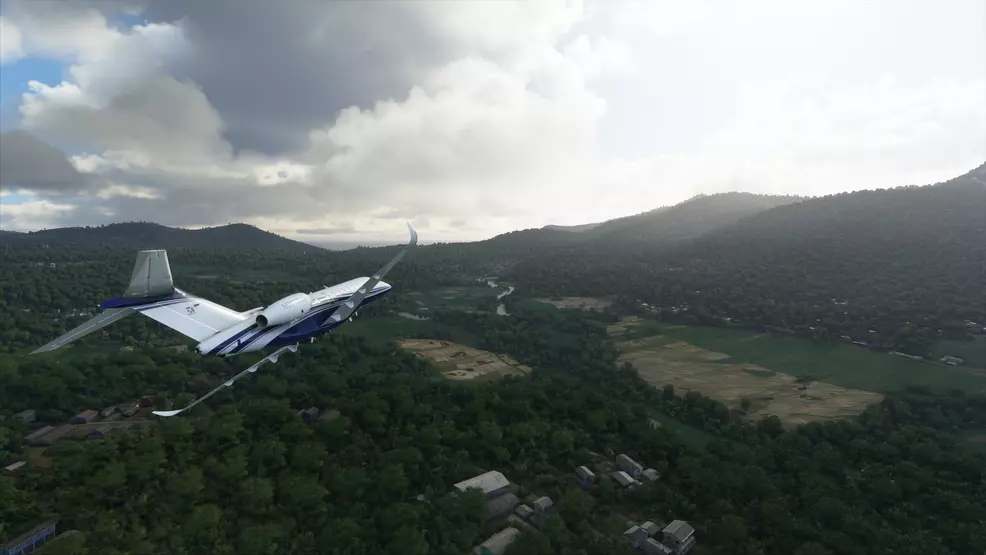
Terrain Vector Data: Determines the quality of tessellation used for the edges of roads, lakes, rivers, etc
Buildings: Determines the overall quality level for procedurally generated structures on the surface
Trees: Determines the overall quality level of the 3D trees that are placed across the landscape
Grass and Bushes: Determines the overall quality of the 3D grass and bush models scattered over the landscape
Objects Level of Detail: Determines the visual quality of things like vehicles or random props found at larger airports or other structures
Volumetric Clouds: Determines the overall visual quality of clouds, including how they cast shadows and how light passes through them
Texture Resolution: Determines the overall texture quality in a scene for things like runways, dirt, etc. This setting does not appear to affect the quality of the aircraft themselves using either cockpit view or external cameras.
Anisotropic Filtering: Toggles anisotropic filtering. This setting can improve the quality of textures viewed at an angle but becomes less noticeable at a distance.
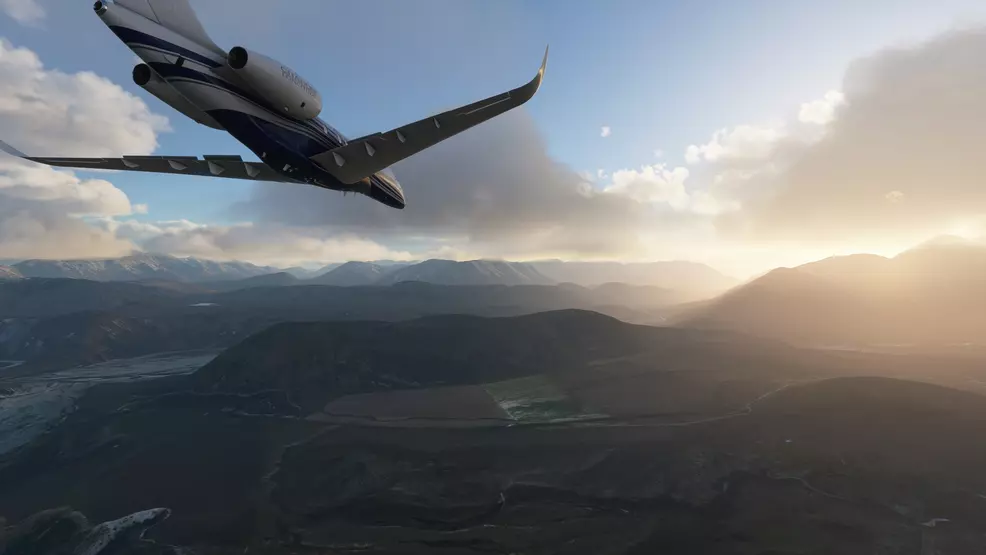
Texture Supersampling: Enables the downsampling of higher resolution textures to increase the perceived quality of textures. Higher values can extend the distance at which the Anisotropic Filtering setting works. It does not seem to work if Anisotropic Filtering is disabled.
Texture Synthesis: Determines the overall quality of synthesized textures. This setting seems to increase the detail of scenery textures, most noticeably in the distance.
Water Waves: Determines the quality of the water surface simulation. Higher values offer the illusion of more dynamic water movement and more points of light reflection.
Shadow Maps: Determines the resolution of shadows cast by complex objects (particularly aircraft). Higher values can offer sharper shadows that dwindle in visual impact as you gain altitude.
Terrain Shadows: Enables terrain to cast shadows onto itself. Higher values offer more realistic simulation. Most noticeable when at dawn or dusk when the sun's rays hit mountains.
Contact Shadows: Determines quality level for screen-space shadows. Most noticeable within the aircraft cockpit interiors on control panels and switches.
Windshield Effects: Determines the quality of rain, ice, and condensation effects of cockpit windows. Higher levels also affect interior glass reflections.
Ambient Occlusion: Enables the simulation of shadows and darkness where two objects or planes intersect. Disabling this setting has a major impact on image quality.
Reflections: Enables the use of screen-space reflections. Higher values increase the detail of these reflections. These can be seen on the surface of water, aircraft exteriors, and interior cockpit glass.
Light Shafts: Enables the casting of simulated light shafts from the sun or other light sources. These shafts are more noticeable when flying under cloud cover in daylight conditions.
Bloom: Enables the simulation of lens bloom from bright light or reflections

Depth of Field: Enables simulation of camera blur. Higher levels offer a more realistic depth of field effect. This setting only seems to work when using the drone camera or Showcase mode.
Lens Correction: Enables the correction of camera lens distortion. In practice, it seems to offer only a slight field of view adjustment.
Lens Flare: Enables the simulation of camera lens flares from light sources
Use Generic Plane Models (AI Traffic): Swaps in the stock planes models for AI air traffic. When disabled, AI aircraft can be seen with various liveries. When disabled, the game uses more CPU and RAM.
Use Generic Plane Models (Multiplayer Traffic): Swaps in the stock plane models for real player aircraft while online. When disabled the game uses more CPU and RAM.
Cloud-powered Graphics Enhancement
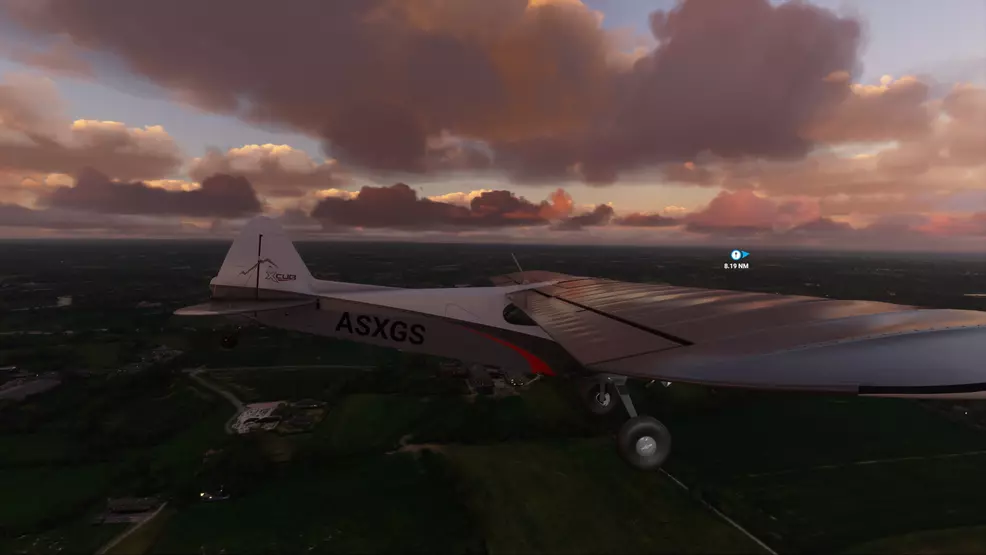
These graphics settings can be found in the options menu under General > Data.
Bing Data World Graphics: Enables the use of real-life satellite imagery from Bing to drastically enhance the quality of the terrain and buildings generated by the game. Using this option requires the game to constantly stream data to your PC while loading into a departure as well as while you fly around. Depending on the areas in which you choose to fly, this option can consume multiple gigabytes of data while playing. It is not recommended to enable this setting if your internet service provider imposes data caps on your service or if your internet connection is not fast enough to reliably stream HD movie content. However, the game does have options to display the amount of data used on a monthly basis as well as tools to limit the amount of data the game will download for this feature.
Photogrammetry: Enables the use of real-life imagery to render realistic representations of 3D buildings across a variety of the world’s biggest and most iconic cities and destinations. Like the Bing Data World Graphics feature, this settings stream data from the cloud into your game client and can potentially consume multiple gigabytes of data while you load into departures and fly. It is not recommended to enable this setting if your internet service provider imposes data caps on your service or if your internet connection is not fast enough to reliably stream HD movie content. However, the game does have options to display the amount of data used on a monthly basis as well as tools to limit the amount of data the game will download for this feature.
Best settings for Microsoft Flight Simulator 2020 - balancing image quality and speed
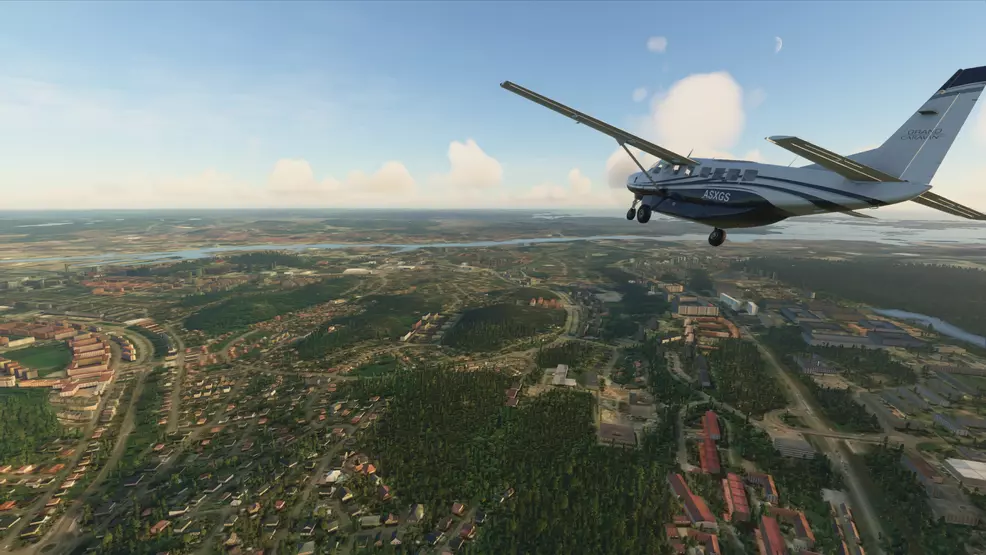
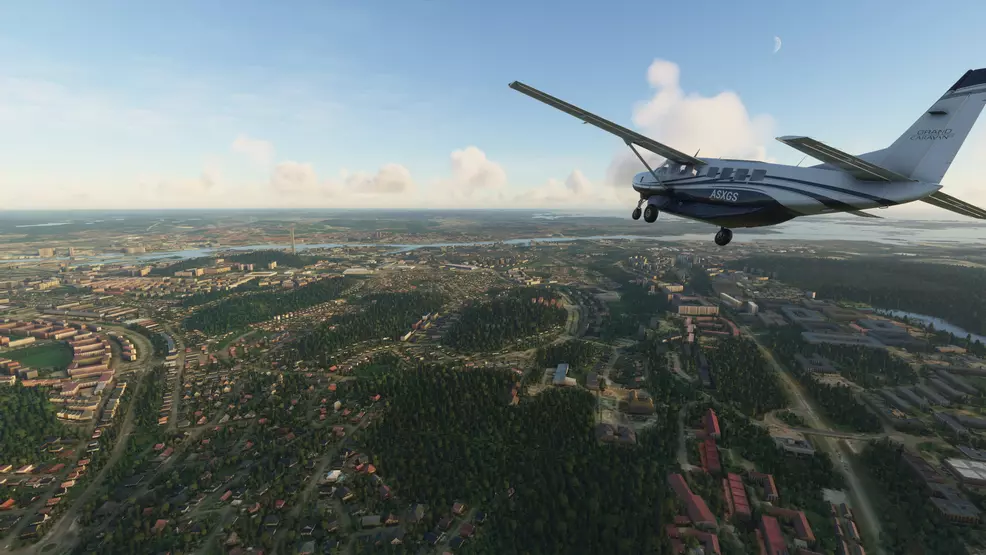


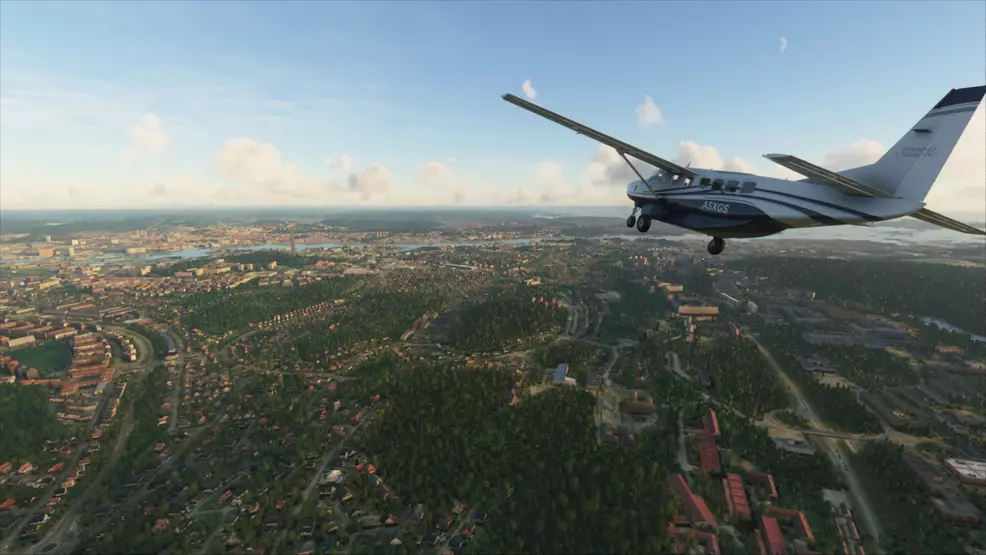
As of this writing, there is not currently any PC hardware configuration available that can run Microsoft Flight Simulator 2020 with maxed-out settings at the highest resolution with optimal framerates. Even systems with Core-i9 CPUs and the RTX 2080 Ti GPU are unable to stay above 30fps consistently when pushed to the max. The good news is that it is possible to get decent performance with some simple adjustments in the graphics settings menu.
We recommend giving the built-in graphics settings presets a try from the get-go. Selecting Low-End, Medium, High-End, or Ultra will automatically toggle the individual settings in a balanced fashion. Naturally, if you have an older or weaker PC that has specs closer to the minimum system requirements, the Low-End preset is a good starting point, as well as a lower resolution such as 1920x1080. If your display uses a higher resolution such as 2560x1440, 3440x1440, or 3840x2160 (4K), we recommend leaving the Full Screen Resolution at your display’s native resolution and lowering the Render Scaling slider for better performance as this will result in better image quality than simply dropping screen resolution.
PCs that are equipped with hardware similar to the recommended system specifications will likely be satisfied with the Medium graphics preset. This offers a rather large image quality boost over the Low-End preset without totally crippling your frame rate. This preset adds shadows back onto the landscape and building models, offering a much more realistic look when you are flying at lower altitudes. If you do most of your flying above the cloud canopy, we also recommend turning the Volumetric Clouds setting up to High when using the Medium preset for a meaningful boost to cloud quality with a negligible performance penalty. Using the Ultra Volumetric Cloud setting on average hardware is not worth the performance trade-off required for a very small jump in cloud quality.
If your PC falls in line with the Ideal recommended specifications, we suggest giving the High-End preset a try. You’ll gain a big boost to rendering distance for both terrain objects and structures, as well as cloud quality. This is the preset we recommend for all PCs with higher-end parts for now as the Ultra preset is particularly punishing for image quality gains that are mostly seen in rendering distance. Many of the Ultra effects are really tough to spot at best and placebo quality at worst.
The most impactful settings in Microsoft Flight Simulator 2020

While some players will be content to fiddle with each individual setting, we think most players should head straight for the Terrain Level of Detail slider to get the most immediate performance gains. On the Ultra preset, it defaults to 200, and on the High-End preset, it will be set at 100. This slider can swing your overall performance as much as 50% when measured at its extremes. After the Terrain Level of Detail, we recommend that you lower your Render Resolution slider to 90 or lower to gain some extra frames (especially for 4K or Ultrawide users). The resulting image will grow softer with each step down from 100, but the built-in TAA anti-aliasing feature will help to keep things looking as good as possible.
Players should also have some realistic expectations about the frame rates you will get in Microsoft Flight Simulator 2020. Most flight sim games are built to operate in the 25-35 fps range. This is the norm for the genre. If you won’t be happy unless you are getting 100+ fps, this software will cause you much frustration for the immediate future. For most players, we recommend using a 30 fps cap enforced by your GPU’s control panel software or via external utility app such as MSI Afterburner. Afterburner is also helpful as it can display your framerates, frame times, temperatures, and hardware utilization with its in-game overlay feature. As of right now, Microsoft Flight Simulator 2020 does not offer any way to display frame rates in-game, so, once again, a utility app such as MSI Afterburner is recommended for players who want to really dive deep into fine-tuning their experience.
Memory Usage and CPU Scaling in Microsoft Flight Simulator 2020
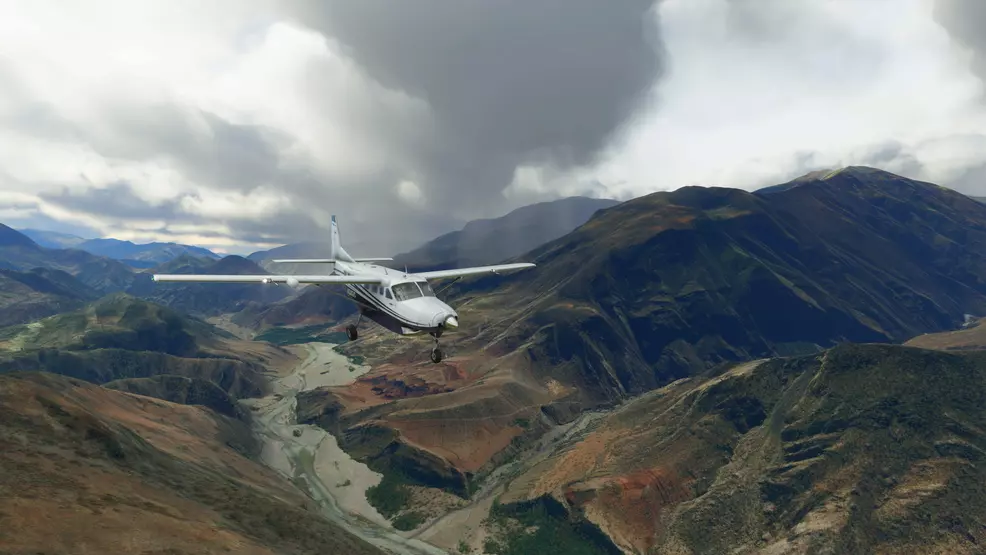
Finally, we should note that Microsoft Flight Simulator 2020 is one of the first games in a long time to make use of large quantities of system RAM and VRAM. For the best possible experience at High-End or Ultra settings, 32GB of system RAM is recommended. During testing, we also observed very high VRAM usage from the game (relative to most other AAA titles). Even at resolutions as low as 1920x1080, the game can use more than 7GB of VRAM with higher settings. At 4K, usage over 10GB was observed. If you are planning on building a new PC for this game or upgrading your existing PC, keep in mind that large amounts of memory are needed for the most premium experience.
On the CPU side of things, Microsoft Flight Simulator 2020 can make use of multiple CPU cores but tends to put the bulk of the workload onto only 4 cores. This is likely tied to the game making use of Microsoft’s older DirectX 11 API for rendering. In recent years, many Microsoft-published titles on PC have made use of DirectX 12, which is known to make better use of additional CPU cores. The development team has already mentioned that ray tracing features would find their way into the game at some undetermined time in the future and those features require DirectX Ray Tracing API (DXR), which requires the use of DirectX 12. This means it is possible that the game may possibly be upgraded to DirectX 12 at some point. For now, expect the game to remain CPU-limited at lower resolutions and settings presets when run with high-end hardware.
For more guides on Microsoft Flight Simulator 2020, including how to hide the HUD for screenshots or how to select the best flight sticks, check out our hub page for the game.
-
Chris Jarrard posted a new article, Microsoft Flight Simulator 2020 graphics and settings guide


